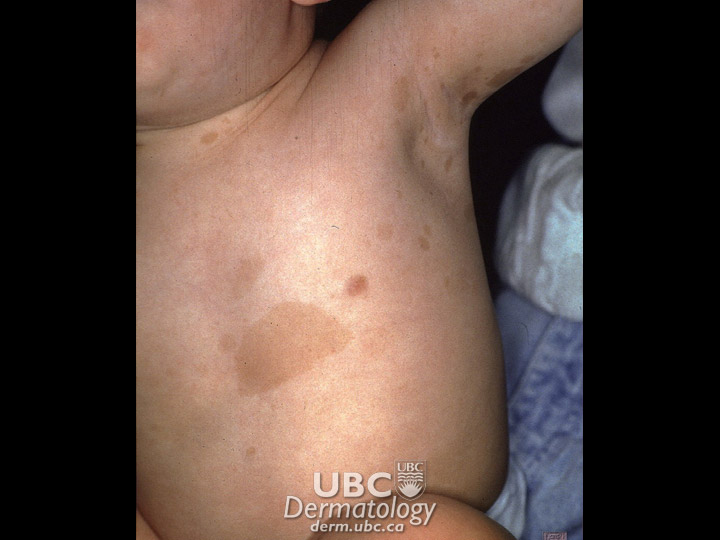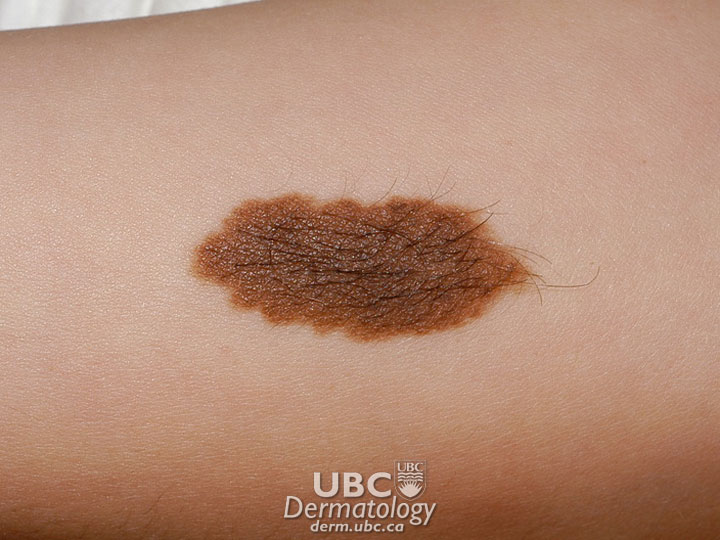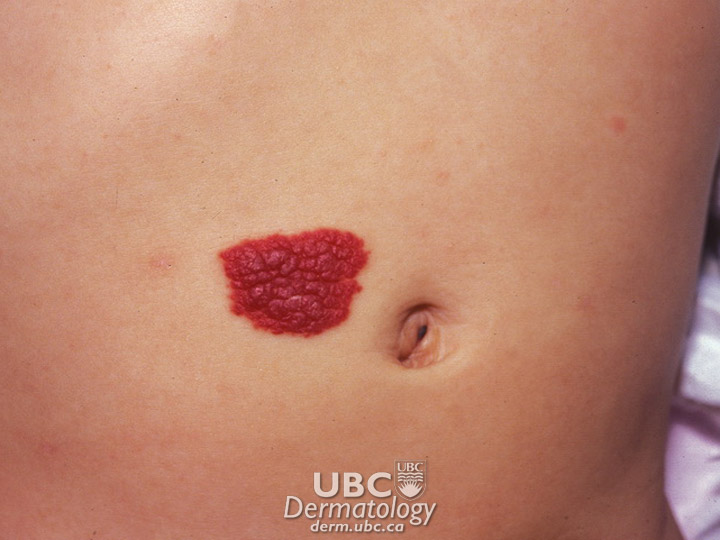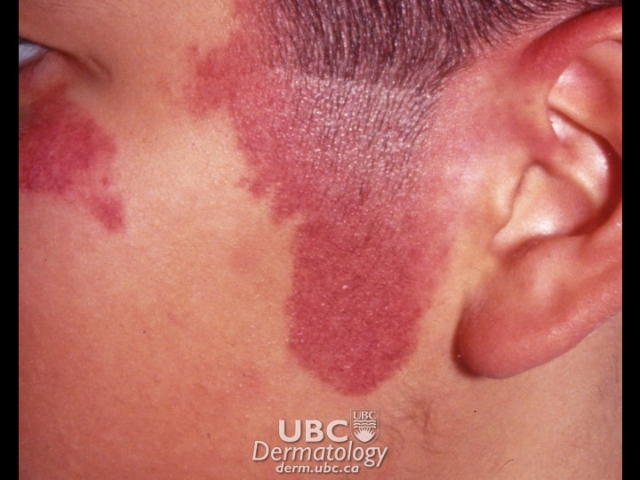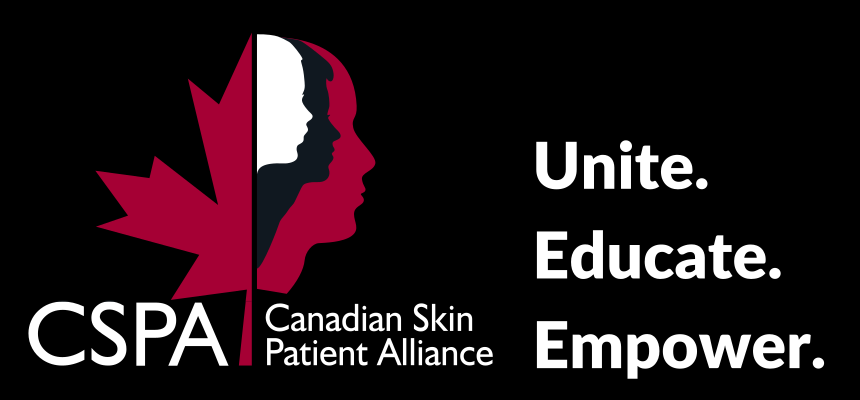Stork Bite or Angel’s Kisses: These tend to be pink, irregularly shaped, and flat, less than a few inches inches tall and wide, and usually found on the neck, head, or upper lip. Almost half of all newborns have one of these birthmarks. There are no known health problems associated with them, and they usually fade by the end of the first year.
Infantile Hemangioma: These are usually red, raised, and lumpy, and may be several centimetres across. They can appear anywhere on the body and occur in one in 20 births. These marks commonly appear between one and four weeks after birth; they can then grow quite rapidly before stopping and slowly fading. Fifty per cent of these marks vanish by the age of five, and 90 per cent have gone by the age of nine. Where the hemangioma is blocking vision or breathing (rare), oral medications (known as beta-blockers), surgery, or laser treatment may be recommended.
Port-wine stains (nevi flammeus): These are usually pale pink at birth but become darker red with time, sometimes appearing like the colour of red wine. They typically occur in three in 1000 births. The shape is irregular, and these stains can sometimes be very large. When they occur on the face, they can make people feel self-conscious. Port wine stains are usually considered permanent and will not generally fade, and those around the eye and forehead can be associated with glaucoma. Port wine stains can also occasionally appear with Sturge-Weber syndrome, a rare disorder where abnormalities may also appear in the brain and eyes.
Congenital Dermal Melanocytosis: A bluish, bruise-like, irregular, flat birthmark, Mongolian Spots are typically about 10 cm across and found on the lower back and buttocks. They are most frequently seen among darker-skinned people, particularly among those from East Asia. Mongolian Spots may not appear until sometime after birth, but gradually fade over several years. They have been mistaken for abuse bruises by social workers and health care professionals.
Café au Lait Spots: Most commonly a light brown, milk-coffee colour, and oval to round, these can appear anywhere on the body and usually include only one or two spots. There are no health problems associated with one or two spots, but if there are many of these spots there is a possibility of neurofibromatosis. Café au Lait spots do not fade with age.
Congenital melanocytic nevus: These usually appear as brown to dark-brown marks that may only be slightly raised, although larger ones can be raised and lumpy. They range from less than 1 cm to more than 30 cm and can appear anywhere on the body. Sometimes congenital melanocytic nevi can be hairy. The marks occur in about one in 100 births. It has been suggested by some studies that there is a cancer risk associated with the larger marks. These large visible marks can have a psychological impact. Surgical removal is an option, but will usually lead to scarring. The marks should be watched for any changes that could indicate cancer.
 AboutFace, at http://aboutface.ca/, provides support for people with facial differences.
AboutFace, at http://aboutface.ca/, provides support for people with facial differences. 
